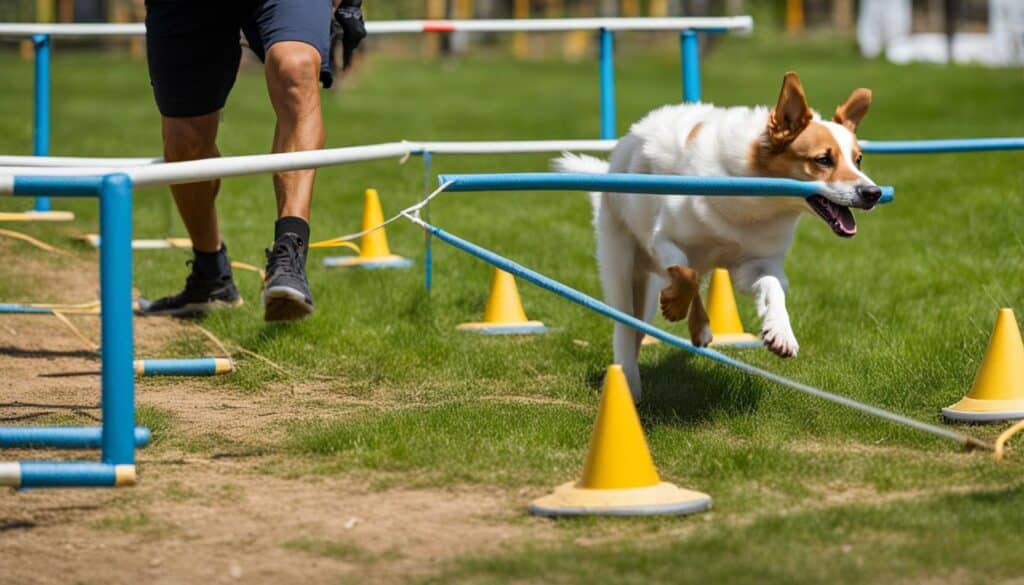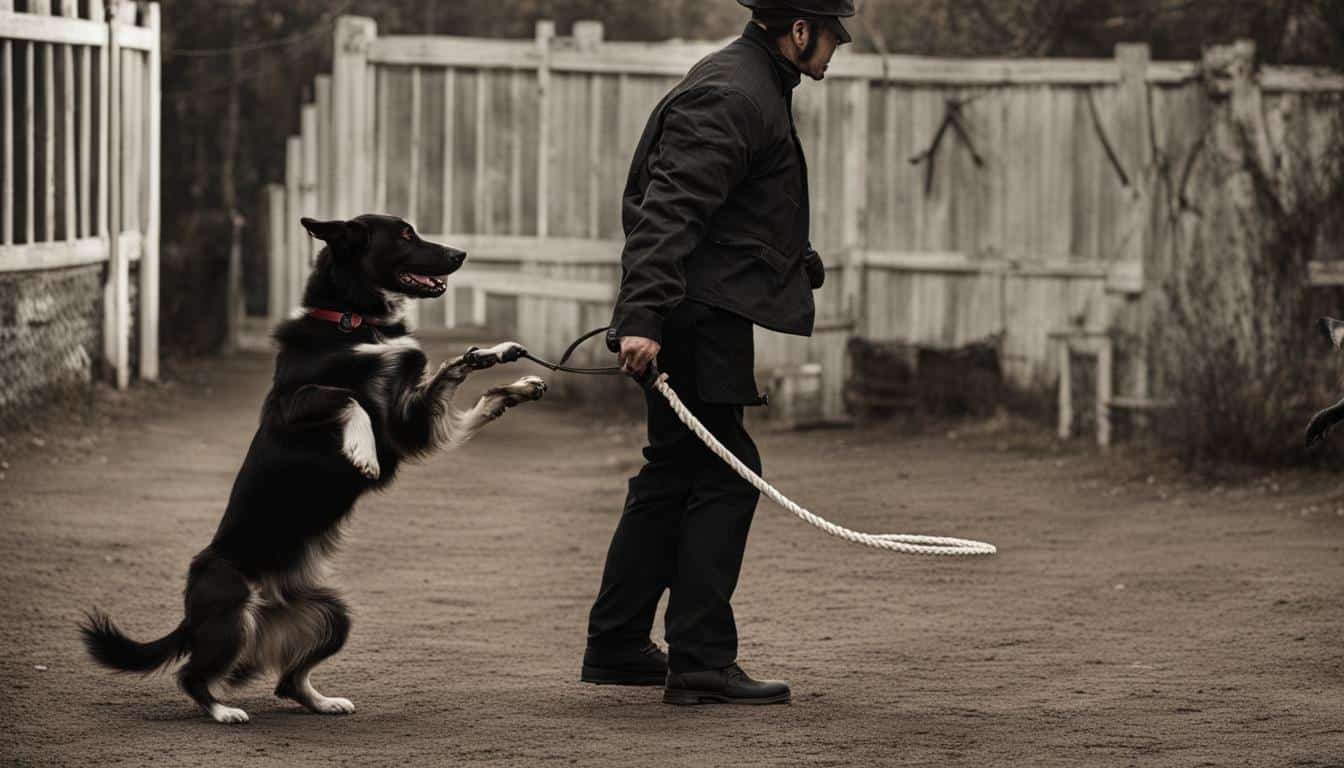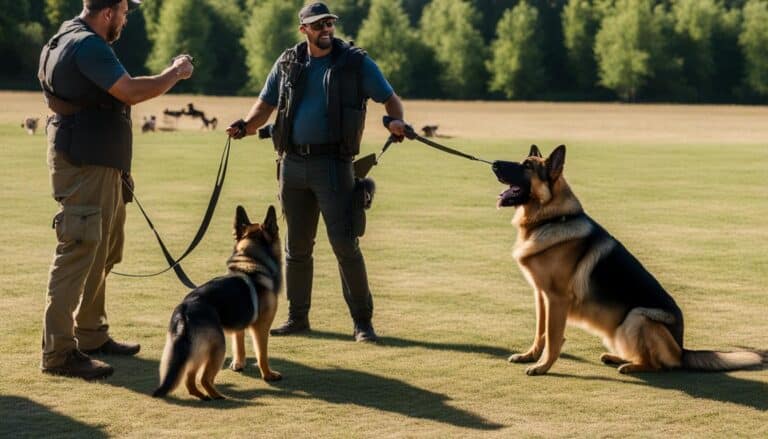Does Hitting a Dog Help With Training?
When it comes to dog training, there are various methods and techniques that can be used. However, the use of punishment, specifically hitting a dog, is a controversial topic that raises important ethical considerations.
Positive reinforcement training has gained popularity as a more humane and effective approach to dog training. This method focuses on rewarding desired behaviors rather than punishing undesirable ones.
In this article, we will explore the effects of hitting a dog as a training method and provide alternative techniques that are both effective and compassionate. So, if you’ve ever wondered whether hitting a dog helps with training, keep reading to discover the answers.
When it comes to training your furry friend, it’s important to consider the long-term consequences of your methods. Hitting a dog can have detrimental effects on their behavior and their relationship with you. So, let’s dive into the reasons why hitting a dog is not an effective training technique and explore some better alternatives.
Understanding Punishment as a Training Method
Punishment in dog training can be categorized into positive obedience training and aversive obedience training. Positive obedience training focuses on teaching desired behaviors through rewards and positive reinforcement. This approach involves providing dogs with treats, praise, and affection to encourage them to repeat good behaviors. On the other hand, aversive obedience training relies on using physical discipline or causing pain to deter undesirable behaviors.
It is important to note that aversive methods, such as hitting or spanking a dog, are not only cruel but also ineffective in teaching them appropriate behavior. Dogs subjected to aversive techniques may develop fear, anxiety, and distrust towards their owners. These negative emotions can lead to adverse behavioral changes and hinder the training process.
Positive reinforcement has been widely regarded as the most effective and humane method of discipline in dog training. By rewarding desired behaviors, such as sitting on command or walking politely on a leash, dogs learn to associate those actions with positive outcomes. This conditioning helps reinforce good behavior and encourages dogs to repeat it in the future.
Instead of relying on punishment, consider incorporating positive obedience training techniques into your dog’s training routine. Not only will this approach strengthen the bond between you and your furry friend, but it will also effectively teach them desired behaviors without causing harm or distress.
The Negative Effects of Hitting a Dog
Hitting a dog as a form of punishment can have severe negative effects on their well-being and the relationship between you and your furry companion. Insecurity and fearfulness are common consequences of physical punishment. Dogs who are subjected to hitting may become more anxious and scared, causing them to hide or even run away from their owners.
Furthermore, this type of punishment can lead to increased aggression in dogs. When a dog is repeatedly hit, they may develop a defensive response and act out aggressively as a means of self-protection. This aggression can manifest towards their owner, other animals, or even people, creating a potentially dangerous situation.
Perhaps the most distressing effect of hitting a dog is the damage it causes to the relationship between you and your pet. Hitting erodes trust and can lead to a strained and damaged bond. Your dog looks to you for love, guidance, and reassurance, but physical punishment undermines this trust and can make them fearful of you. The emotional connection that once formed the foundation of your relationship may be compromised, resulting in a diminished quality of life for both you and your pet.

It is important to understand that there are alternative methods of training and discipline that can effectively address behavioral issues without resorting to hitting. By utilizing positive reinforcement techniques such as rewards, treats, and praise, you can establish a loving and respectful relationship with your dog while achieving desired behaviors.
In the next section, we will explore gentle and effective training alternatives to hitting a dog, including time-outs, voice commands, and removing rewards. These methods prioritize your dog’s emotional well-being and help build a foundation of trust and understanding, promoting a harmonious and fulfilling relationship between you and your furry friend.
Gentle and Effective Training Techniques
When it comes to training your dog, using gentle and effective techniques is key. Instead of resorting to hitting, there are various alternatives that can help shape your dog’s behavior in a positive way. Let’s explore some of these methods:
1. Time-outs
Time-outs can be an effective strategy to deal with undesirable behavior. When your dog misbehaves, calmly and gently lead them to a designated area or a quiet room where they can have some alone time. This temporary separation allows them to reflect on their actions and helps them understand that their behavior is not acceptable. During the time-out, avoid engaging with your dog, as any form of attention can reinforce the negative behavior.
2. Voice Commands
Using voice commands is another valuable tool in dog training. When your dog engages in undesirable behavior, firmly but calmly use commands like “no” or “stop.” Your tone and body language should convey your disapproval. Consistency is key – make sure to use the same commands every time your dog misbehaves to reinforce the message. Over time, your dog will associate these commands with disapproval and learn to modify their behavior accordingly.
3. Toy and Attention Removal
Removing toys or attention when your dog displays bad behavior can serve as a consequence. When your dog acts inappropriately, temporarily take away their favorite toy or withdraw attention by turning away from them. This teaches your dog that their actions have consequences and helps discourage them from repeating the unwanted behavior. However, it’s essential to remember to provide positive reinforcement and reward desired behaviors to ensure a balanced training approach.
4. Ignoring Bad Behavior
Ignoring bad behavior can be a powerful way to discourage your dog from repeating it. By not giving any attention or reaction to their undesirable actions, you remove the reinforcement they seek. However, it’s important to differentiate between ignoring bad behavior and neglecting your dog’s needs. Always ensure that your dog’s basic needs, such as food, water, and regular exercise, are met.
By implementing these gentle and effective training techniques, you can cultivate a positive and respectful relationship with your dog while achieving the desired behavioral outcomes. Remember, patience and consistency are key to successful training.

The Power of Positive Reinforcement Training
When it comes to training your dog, positive reinforcement is a powerful and effective method. Unlike punitive measures, positive reinforcement focuses on rewarding desired behaviors rather than punishing unwanted ones. By using treats, praise, and affection as rewards, you can communicate to your dog what behaviors are expected and encourage them to repeat those behaviors.
Discipline through conditioning is the core principle of positive reinforcement training. Through consistent and repetitive training sessions, your dog will learn to associate positive actions with rewards. This conditioning helps them understand what is considered acceptable behavior in various situations.
To enhance your training efforts, consider using remote pet cameras like the Petcube. These cameras enable you to monitor your dog from anywhere, providing you with an extra set of eyes. With interactive features, you can reward your dog with treats or interrupt unwanted behavior even when you’re not physically present. This innovative tool empowers you to reinforce positive behaviors and address problematic actions effectively.
By embracing positive reinforcement training and utilizing tools like remote pet cameras, you create a harmonious environment that fosters learning and growth for your dog. The power of rewards and discipline through conditioning can shape your dog’s behavior and strengthen the bond between you and your furry friend.




